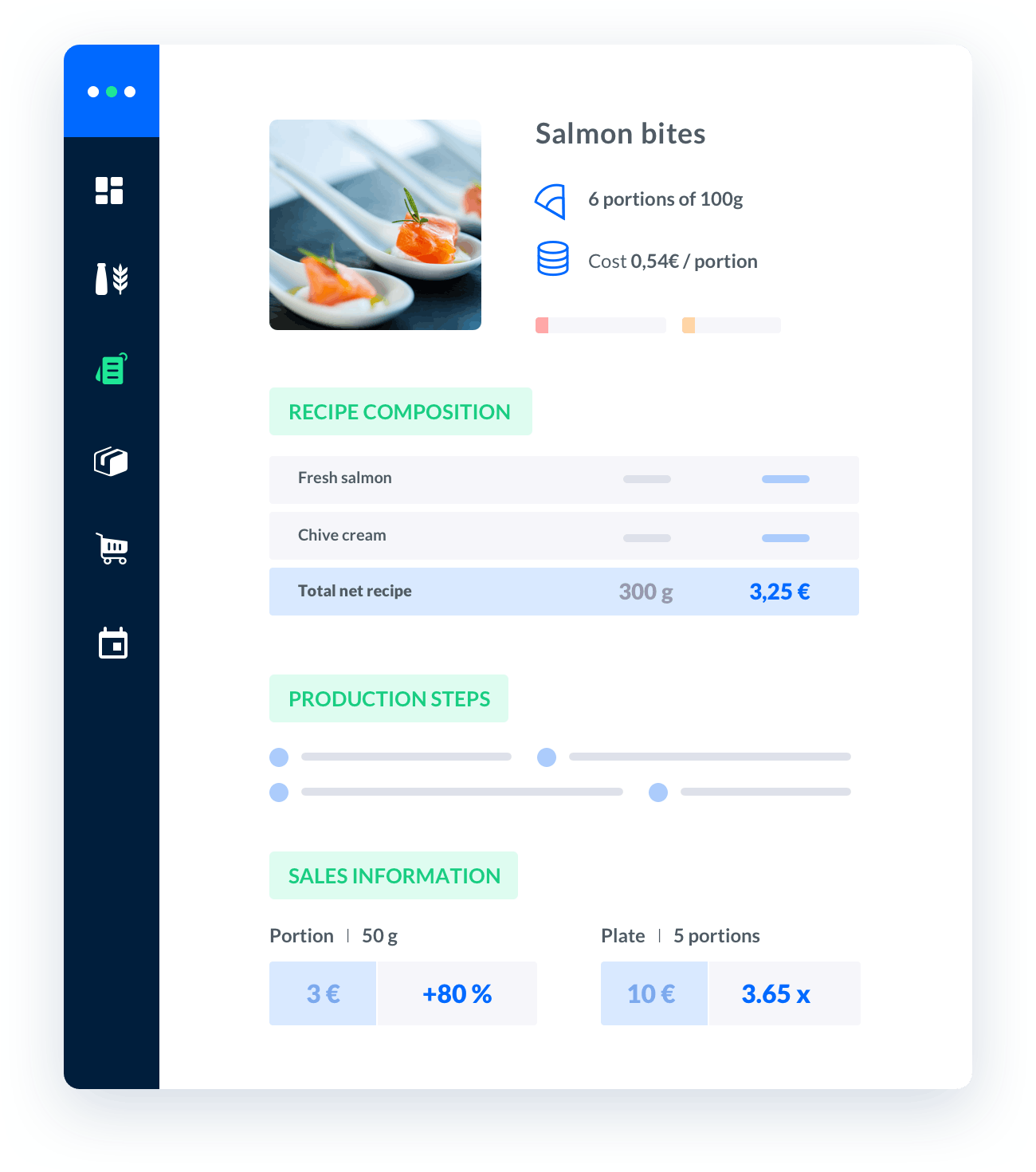how to do a cost card
When it comes to managing costs in the catering industry, having a proper cost card is essential.A cost card helps you keep track of your expenses and ensures that you are pricing your products and services correctly.

Melba: the food cost app to optimize the profitability of your restaurant
Discover how to optimize the profitability of your restaurant with melba

The ultimate guide to food cost restaurant
Learn more about the food cost basis and how to reduce your food cost percentage
When it comes to managing costs in the catering industry, having a proper cost card is essential. A cost card helps you keep track of your expenses and ensures that you are pricing your products and services correctly. In this article, we will guide you through the process of creating a cost card for your catering business.
Understanding the Basics
What is a Cost Card?
A cost card is a document that outlines the various expenses incurred in running your catering business. It includes the cost of ingredients, labor, overheads, and other miscellaneous expenses. By maintaining a cost card, you can calculate the total cost of each dish or service you offer and determine the appropriate selling price.
Why is a Cost Card Important?
A cost card provides valuable insights into the profitability of your catering business. It helps you analyze the cost structure, identify areas of inefficiency, and make informed decisions regarding pricing and cost control. By maintaining an accurate cost card, you can maximize your profits and ensure the financial sustainability of your business.
Creating a Cost Card
1. Identify and Categorize Expenses
To create a comprehensive cost card, start by identifying and categorizing all your expenses. This includes both direct costs (ingredients, packaging, etc.) and indirect costs (labor, rent, utilities, etc.). Categorizing expenses will help you track and analyze them more effectively.
2. Determine Cost Units
Next, determine the cost units for each expense category. Cost units are the measurable units associated with each expense. For example, the cost unit for ingredients can be grams or kilograms, while the cost unit for labor can be hours or shifts. Assigning cost units will enable you to calculate the cost per unit accurately.
3. Calculate Cost Per Unit
Once you have identified the cost units, calculate the cost per unit for each expense category. This involves dividing the total cost of the category by the total number of units consumed. For example, if you spent $500 on ingredients and used 100 kilograms, the cost per kilogram would be $5.
4. Determine Overhead Costs
In addition to direct costs, you need to account for overhead costs such as rent, utilities, insurance, and administrative expenses. Calculate the total overhead costs and allocate them to different cost units based on their proportionate contribution to each expense category.
5. Calculate Total Cost
Now that you have the cost per unit and the overhead costs allocated, multiply the cost per unit by the number of units consumed to calculate the total cost for each expense category. Sum up all the individual costs to obtain the total cost of production/service for a particular dish or service.
Using the Cost Card
1. Pricing
The cost card provides you with the necessary information to determine the selling price of your dishes or services. Add a reasonable profit margin to the total cost to cover your overheads and generate profits. Consider market trends, competition, and customer preferences while setting the selling price.
2. Cost Control
The cost card acts as a monitoring tool to control your expenses. Regularly review your cost card to identify any cost overruns or inefficiencies. Analyze the cost per unit for each expense category and explore opportunities to reduce costs without compromising quality.
3. Menu Engineering
By analyzing the cost card, you can identify the most and least profitable items on your menu. This information can help you make informed decisions about menu engineering, such as promoting high-profit items or modifying recipes to reduce costs while maintaining customer satisfaction.
Conclusion
A well-maintained cost card is instrumental in managing costs and ensuring profitability in the catering industry. By following the steps outlined above, you can create an accurate cost card that will serve as a valuable tool for pricing, cost control, and menu engineering. Regularly update and review your cost card to adapt to changing market conditions and maintain a competitive edge.
Remember, maintaining a comprehensive and accurate cost card is crucial for the success of your catering business. Use the information provided in this article to create your cost card and make informed decisions regarding pricing and cost control.






